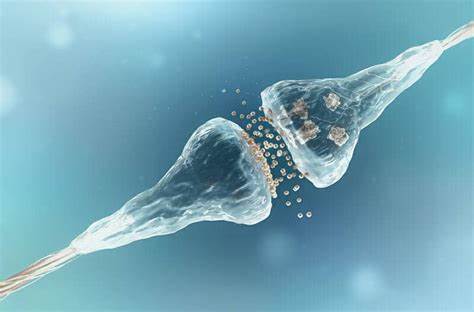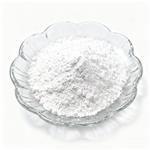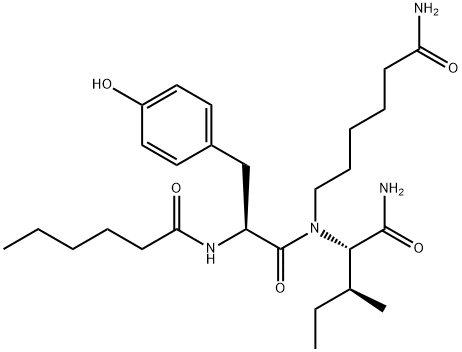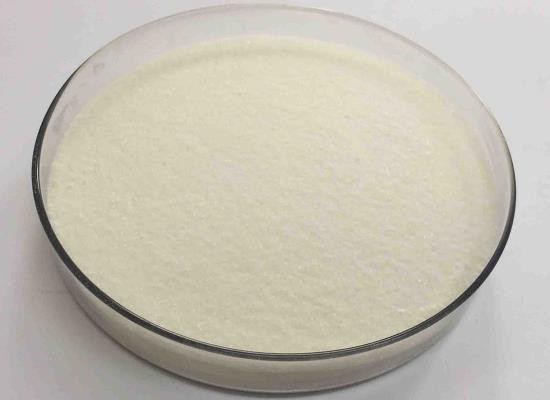The mechanism of action of Dihexa
General description
Dihexa, a novel small molecule activator of the endogenous HGF/c-Met system supports synaptic plasticity and reverses nervous system deficits. Furthermore, Dihexa has neurotrophic activity seven times greater than brain-derived neurotrophic factor (BDNF). It appears Dihexa is an excellent novel candidate molecule to augment peripheral nerve regeneration and functional recovery.
Delivery of cells and drugs to the injury site and their long-term maintenance at the site is critical for accelerated target organ repair and functional recovery. Biomaterial-based delivery systems (hydrogels) have been shown to be excellent carriers that enhance cell/drug localization, survival and therapeutic efficacy in organ injury repair. Shashikumar K. Salgar's team used hydrogel to deliver MSCs and growth factors.
Optimal functional recovery after peripheral nerve injury requires the regenerating axons form functional connections with their original muscle fibers as well as the restoration of the number and size of the motor units in these muscles. Although stem cells have previously been used for repair at nerve lesion sites, little attention has been paid to enhancing the recovery of the denervated target muscles; even with enhanced nerve regeneration aided by the stem cells, muscle recovery remains sub-optimal. Axotomy of the peripheral nerve leads to a rapid decline in muscle mass, which can be reversible if there is good quality muscle re-innervation. Sustained denervation leads to progressive atrophy, myocyte death, and fibrosis with irreversible muscle impairment. Shashikumar K. Salgar's team sought to enhance functional recovery of the target muscle by injecting mesenchymal stem cells and growth factors (G-CSF and Dihexa) directly into the target muscles after surgical nerve repair.
The objectives of the study were two-fold: 1) To determine whether MSC, G-CSF, and Dihexa alone or in combination therapy can improve limb functional recovery in a sciatic nerve transection-repair model; and 2) To determine whether MSC, G-CSF, and Dihexa administration into target muscle (gastrocnemius) mitigates muscle atrophy and enhances limb functional outcome.1

Fig. 1 Dihexa used in nervous system
Mechanism of Action
The renin-angiotensin system (RAS) is a paracrine RAS within the central nervous system (CNS) and is closely related to Alzheimer’s disease (AD). The endogenous hexapeptide angiotensin IV (Ang IV), an important component of the brain RAS, was found to rescue cognitive impairment and recover memory in previous studies. In our study, we used different doses of Dihexa, which can be orally administered and cross the BBB in APP/PS1 mice. We found that the amount of AngIV in mouse tissue increased after the administration of Dihexa compared to that in the WT group. Meanwhile, Dihexa restored spatial learning and cognitive functions in the Morris water maze test. Dihexa increased the neuronal cells and the expression of SYP protein in APP/PS1 mice in Nissl staining. Furthermore, Dihexa decreased the activation of astrocytes and microglia, markedly reduced levels of the pro-inflammatory cytokines IL-1β and TNF-α and increased the levels of the anti-inflammatory cytokine IL-10. Dihexa activated the PI3K/AKT signaling pathway, while PI3K inhibitor wortmannin significantly reversed the anti-inflammatory and anti-apoptotic effects of APP/PS1 mice. These findings highlight the brain AngIV/PI3K/AKT axis as a potential target for the treatment of AD.2
References
1 Weiss, Jessica B., et al. "Stem cell, Granulocyte-Colony Stimulating Factor and/or Dihexa to promote limb function recovery in a rat sciatic nerve damage-repair model: Experimental animal studies."Annals of Medicine and Surgery71 (2021): 102917.
2 Sun, Xiaojin, et al. "AngIV-analog dihexa rescues cognitive impairment and recovers memory in the APP/PS1 mouse via the PI3K/AKT signaling pathway."Brain sciences11.11 (2021): 1487.
You may like
Related articles And Qustion
Lastest Price from Dihexa manufacturers

US $80.00-10.00/g2025-11-03
- CAS:
- 1401708-83-5
- Min. Order:
- 1g
- Purity:
- 99%
- Supply Ability:
- 20tons

US $0.00/Box2025-10-14
- CAS:
- 1401708-83-5
- Min. Order:
- 1Box
- Purity:
- 99%
- Supply Ability:
- 10tons



